Xianmin Zhu
In Januanry 1943, born in Fan County, Shandong Province, China. Vice chairman of the 6th & 7th China Photographer’s Association. Executive chairman of the China Art Photography Association. Chairman of Beijing Art Photography Society. Director of the Professional Assessment Committee of Culture Ministry. Having special allowance for artists from the State Council.
Awards
2014 Xishuangbanna International Film Exhibition, the Special Contribution Prize
2013 Dali International Film Exhibition, Photographic Art Achievement Award
2012 Jinan International Photography Biennale, Life Achievement Award
2005 China News Photography Society, Photography Career Achievement Award
1998 co-produced Television Documentary “Photographer Xianmin Zhu” by Scola TV Station (U.S.) and Yellow River TV Station (China) broadcast in the U.S. and China 1998. won the 4th “Jinqiao” Award issued by State Council Information Office and The Ministry of Radio and Television.
1994 CCTV produced and aired the “Eastern Talent. Xianmin Zhu”, having Silver Award issued by the The Ministry of Radio and Television.
1989 “Chinese Photographer Xianmin Zhu’s Work” was published by People’s Fine Arts Press, won the “Lepzig International Book Fair” Award Exhibitions 2013 “Yellow River is waiting” Xianmin Zhu Photography Collection Exhibition in Henan, Nanyang Cuiwenxuan Gallery.
2013 “Chinese Migrant Workers” exhibited in Shenyang International Industrial Photography Exhibition.
2012 “The Soviet Union 1988” Xianmin Zhu’s Photography exhibited in Lianzhou International Photography Festival
2012 “40 years of changing in Peral River Delta region” Xianmin Zhu’s Review Collection in Guan Shan Yue Museum.
2011 “50 years changing of China” Xianmin Zhu’s Review Collection in Beijing Capital Museum.
2011 Co-exhibition of Xianmin Zhu “Chinese Farmers” in Lianzhou International Photography Festival.
2011 Co-exhibition of Xianmin Zhu “Chinese Farmers” in Dali International Photography Festival.
2011 Tributing Xianmin Zhu “Worldwide People” in Pingyao International Photography Festival.
2011 Xianmin Zhu’s “Chinese Farmers” Collection hold by the Xinhua News Agency.
2010 “Yuanxing Yang, Houmin Lv, Xianmin Zhu” the theme country, leader and people exhibited in Guangzhou Museum.
2010 Guardian Guangzhou hold the collection exhibition of “Leaders & People”.
2009 Album “The age of life” published by Southern Daily Press, Theme “Restless” exhibited in Lianzhou International Photography Festival.
2008 “Time Image 1966-1976” exhibited in Lianzhou International Photography Festival.
2006 “Yesterday Beijing” Xianmin Zhu Photography Exhibition held place in Henderson building Gallery.
2006 “1980’s Beijing” exhibited in EPSON(CHINA)
2006 “Time Image 1966-1976” held in Guangzhou Museum and published the related album.
2006 “1980’s Beijing” exhibited in EPSON(CHINA) and published the related album.
2004 “Restless” displayed in Wuyi Mountain International Photography Festival.
2002 “Xianmin Zhu Photography Exhibition” held in Water Castle in Paris, France. “Guizhou Style” exhibited in Tunyun Photography Festival. “Getting Into Nepal” exhibited in Pingyao International Photography Festival.
2001 “Xianmin Zhu Photography” exhbited in Yi Yuan International Museum, Beijing.
2000 “Xianmin Zhu Scenery Photogarphy” exhibited in Beijing Photography Zone.
1995 “Xianmin Zhu’s Photography” exhibited in San Francisco, U.S.
1993 “Xianmin Zhu’s Photography” exhibited in Tokyo, Japan.
1992 “Xianmin Zhu’s Photography” exhibited in Tai Pei.
1985 “Xianmin Zhu Photography Exhibition” exhibited in National Art Museum of China, toured among 6 other provinces.
Publication
2007 Album “The Image of Chinese People’s Life” published by China Photography Press.
2007 Album “Yellow River is waiting” published by Renmin University of China Press.
2006 “People” republished by China Photography Press.
2006 Xianmin Zhu’s Photography Album “U.S.—Japan Restless” Chinese Overseas Press reprint.
2006 “Time Image”—Xianmin Zhu from 1966-1976. held and published in Guangzhou Museum.
2006 “the 1980’s Beijing” Xianmin Zhu’s distinctive photography exhibition in Beijing. EPSON(CHINA) displayed and published the related album.
2005 “Xianmin Zhu Photographic Collection” published by Worker Press, CCTV broadcast the “Mission” in Xianmin Zhu’s Album.
1999 “Citizen around Yellow River” won the National press and Publication Department of the 5th National Book & Art Exhibition, Best Outstanding Award.
1998 Xianmin Zhu’s Photographic Album “Citizen around Yellow River” published by Zarva Press.
1997 Xianmin Zhu’s Photographic Album “The Yellow River People in China” published by Culture and Art Press
1996 Xianmin Zhu’s Photographic Album “Restless” published by Culture and Art Press
1991 two photography works “ Central Plains’ People in Yellow River” and “Prairie People” published by Modern Press cooperation with Taiwan.
1987 “Chinese Photographer Xianmin Zhu Collection” published by People’s Fine Arts Press, Leipzig International Book Fair, Work Award. in 1989.
Collections
2013 Liaoning Museum collected “Xianmin Zhu” works
1996 The German Ellison Pictish Art Museum collected 20 photographs from Xianmin Zhu
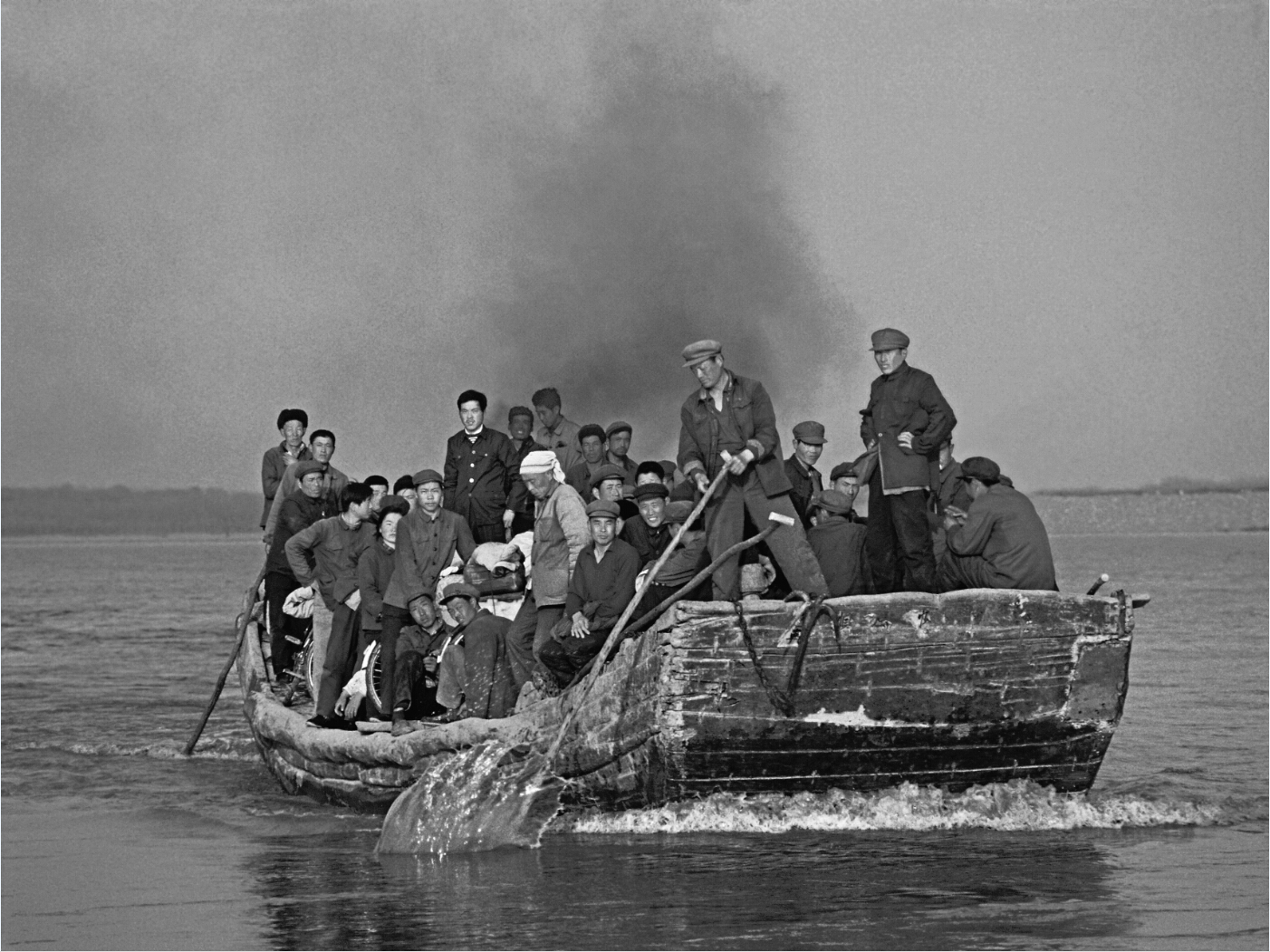
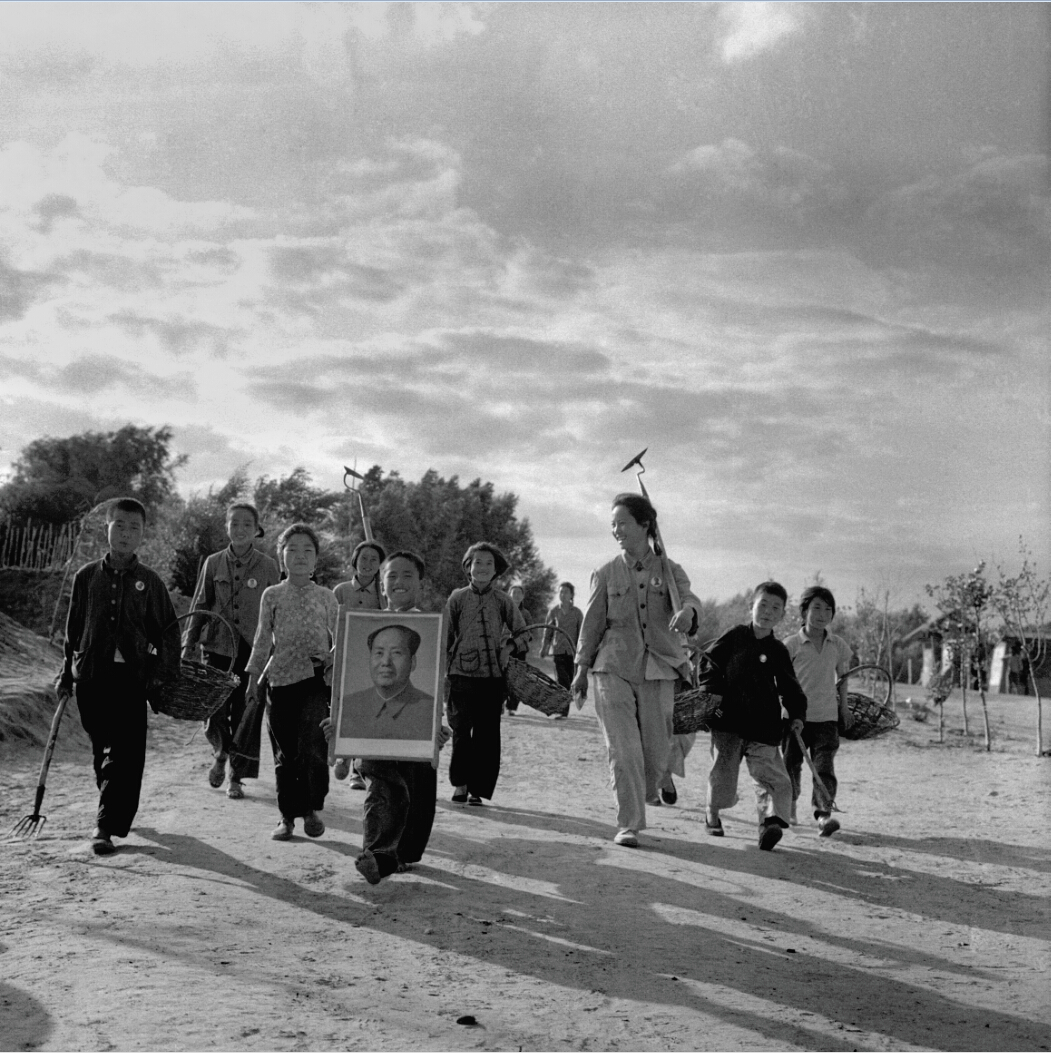
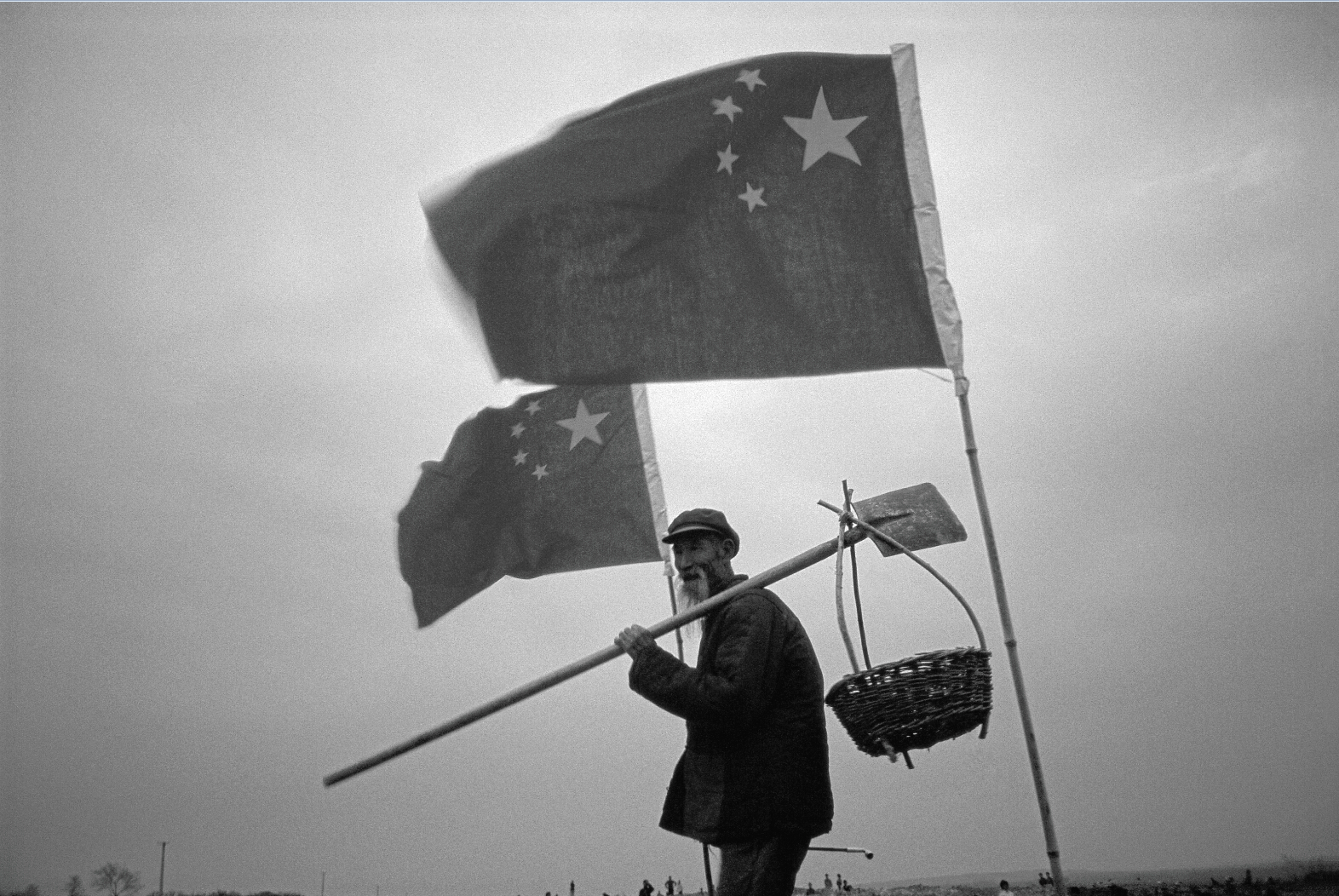
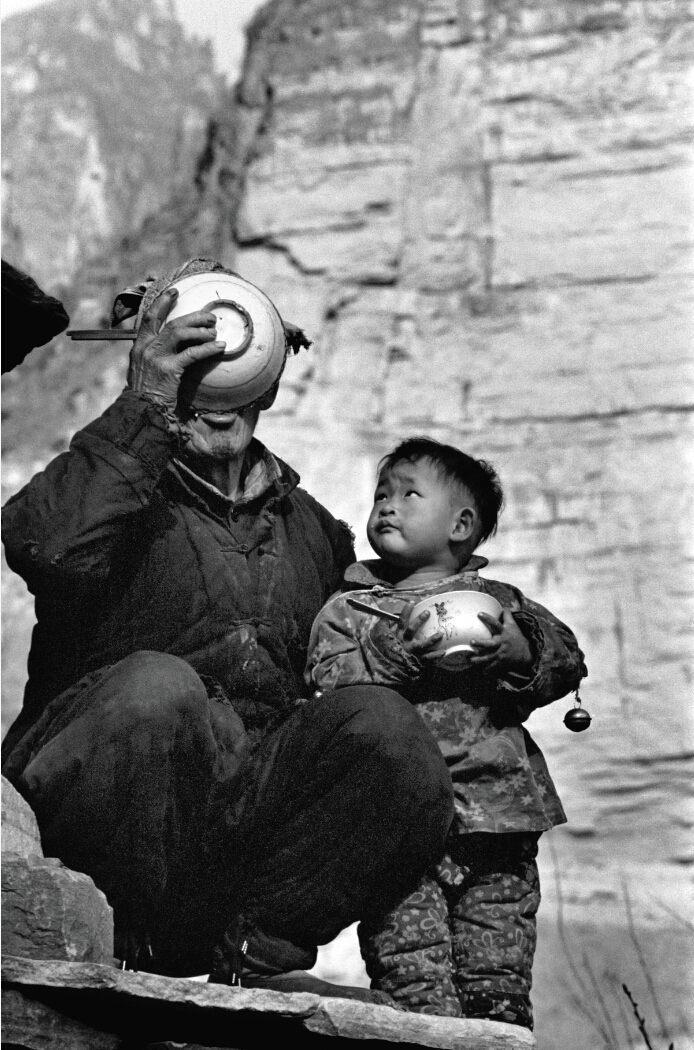
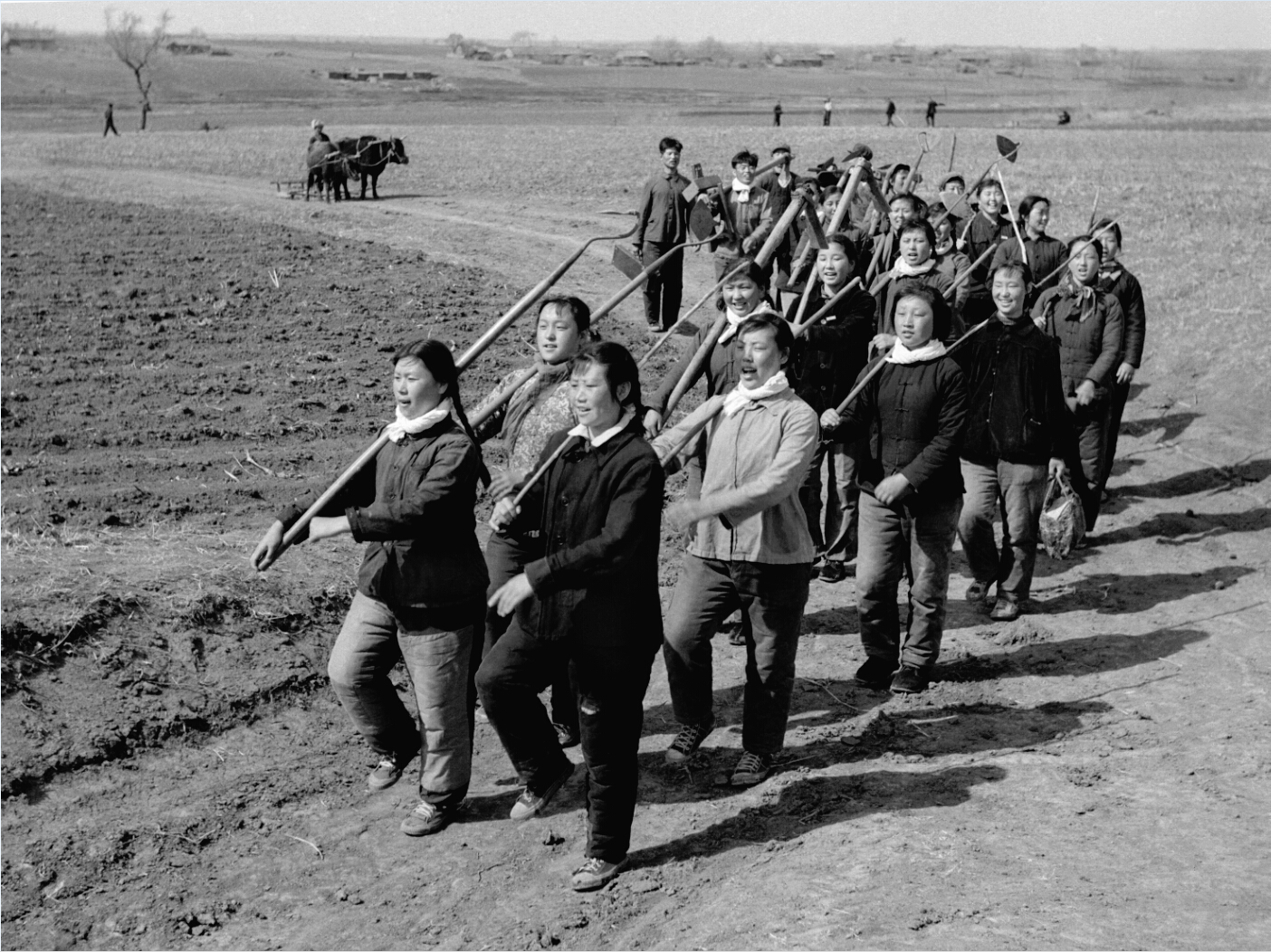
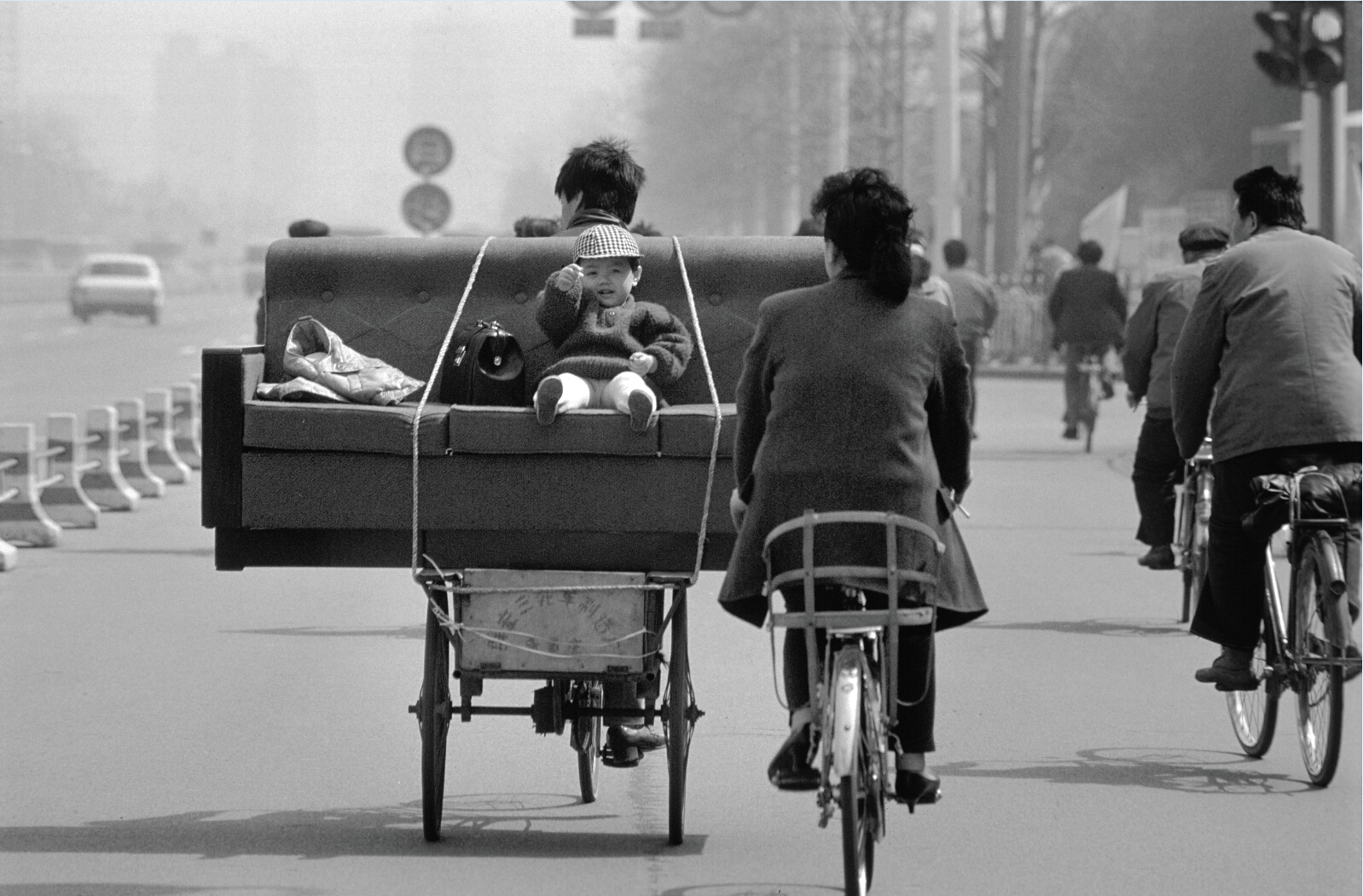
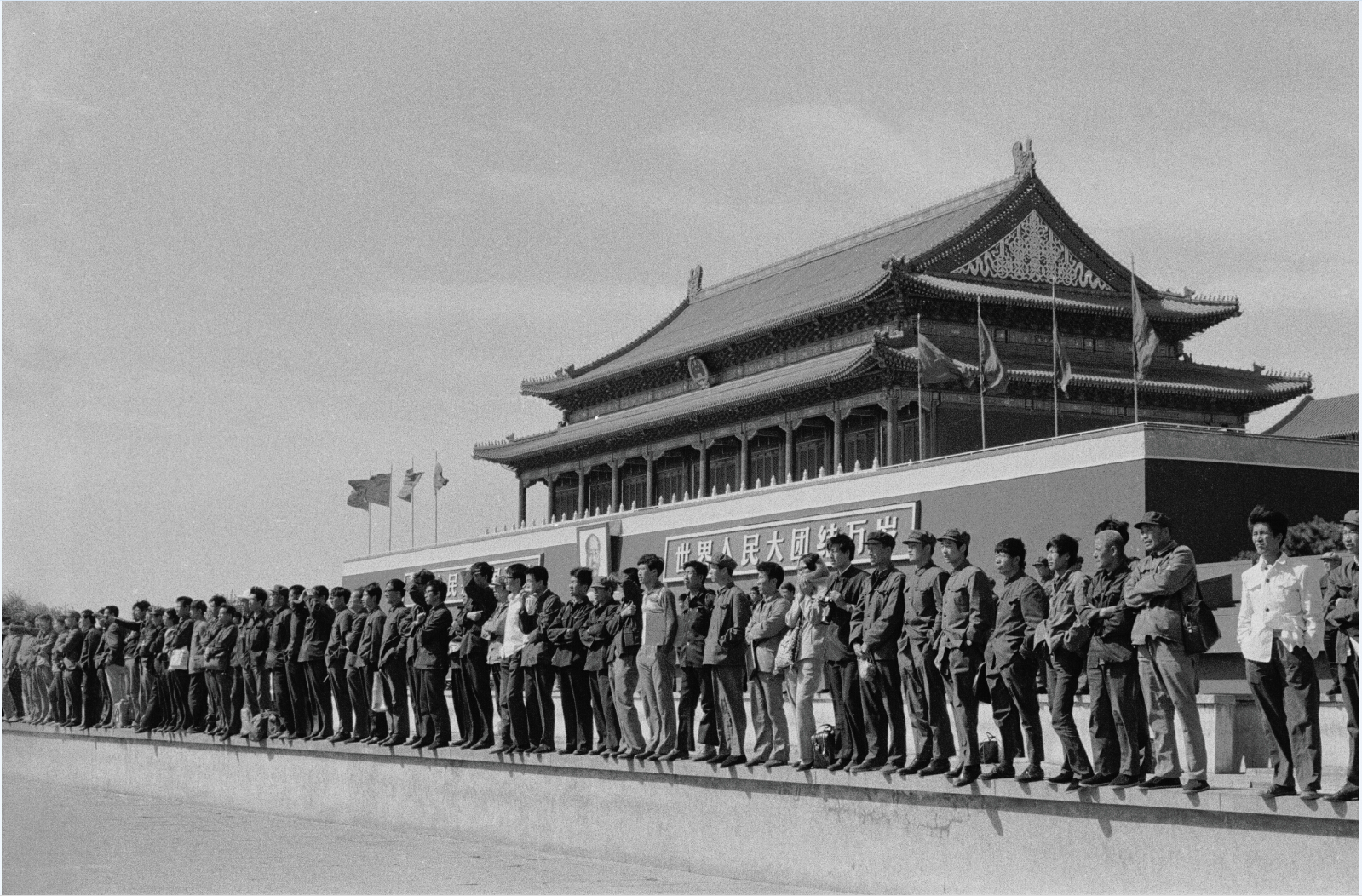
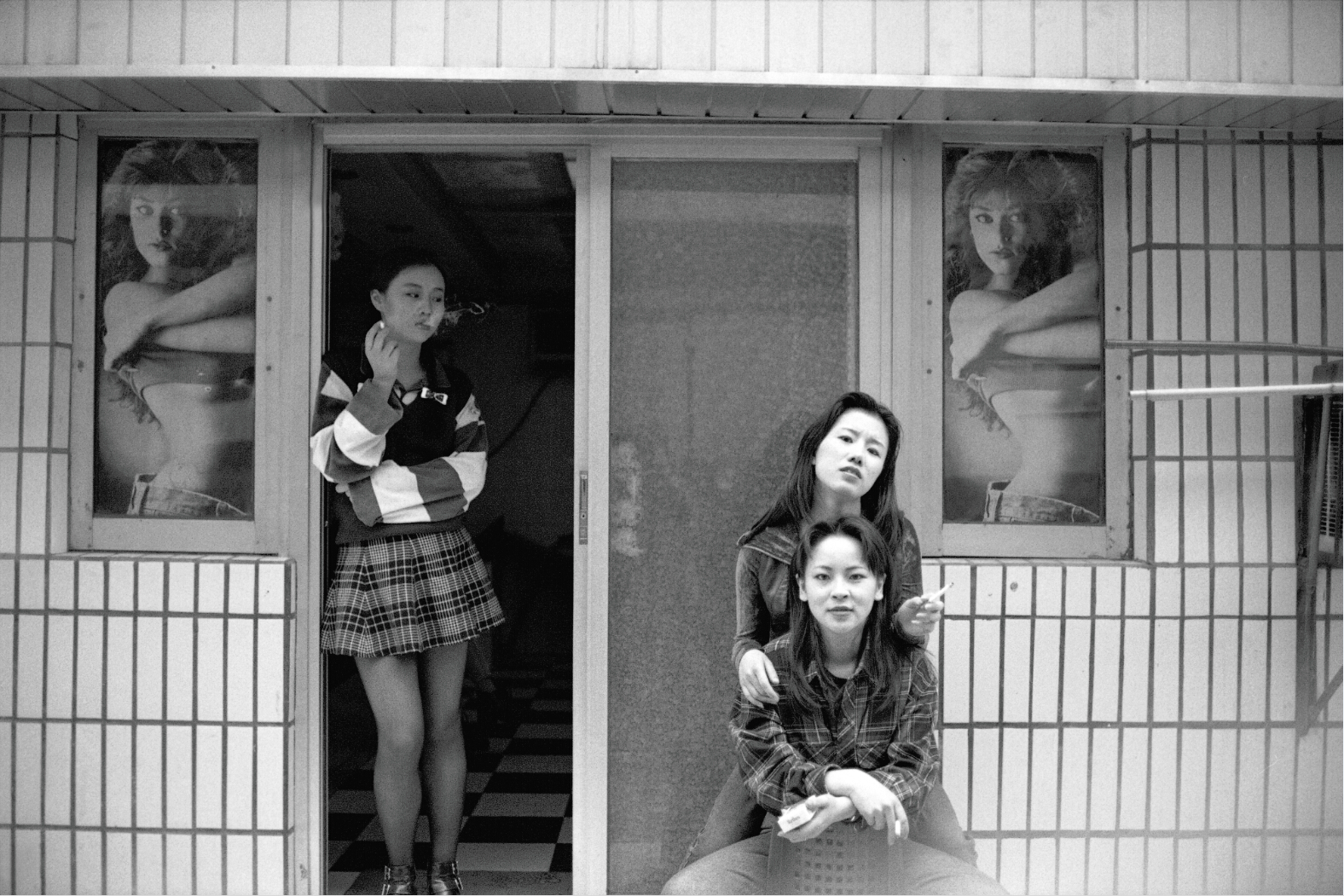
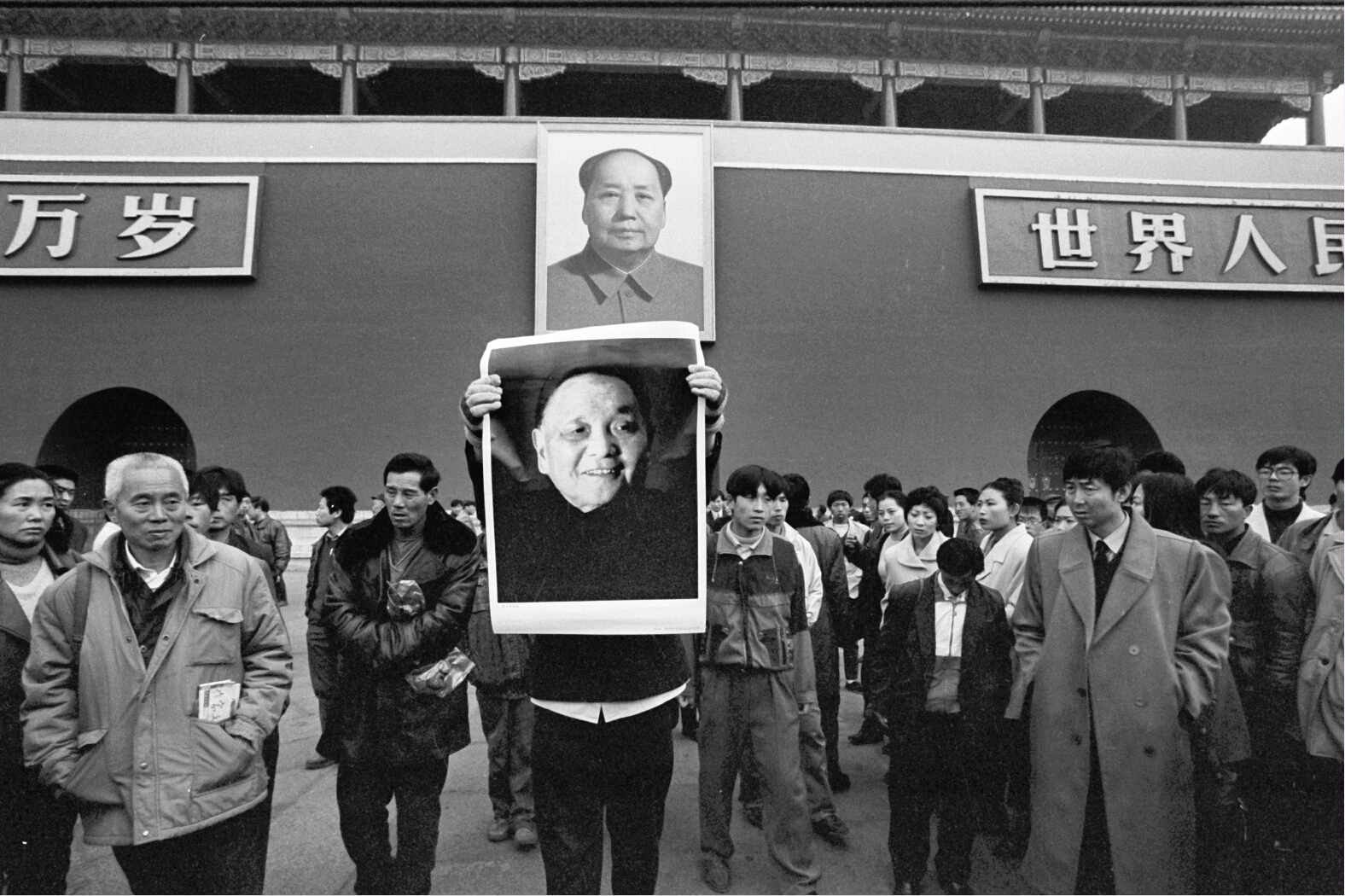
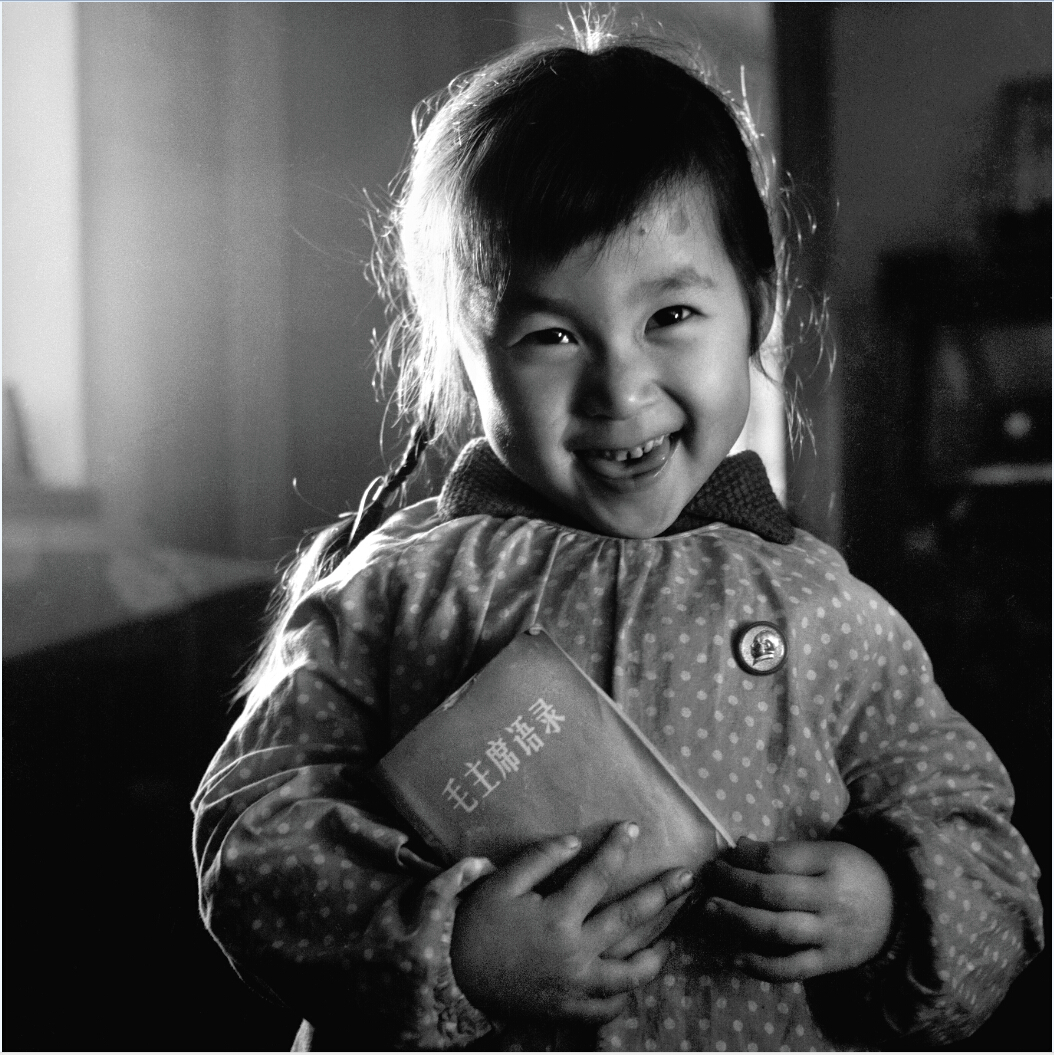
一个儿子的忠诚与爱情
李媚
朱宪民是中国当代摄影史中具有特殊地位的摄影家。他的特殊之处在于,在20世纪40年代出生的摄影家中,少有像他这样早在70年代初期就在有意无意之间关注百姓日常生活,并且以朴素、自然、忠实于生活的态度,记录平民百姓生活的。他是他的同辈人中能够明确而到位地用摄影表达生命根系于情节的人。他的特殊之处还在于,不管他的生活处境、社会地位有着怎样的变化,他仍然在摄影中保持着一种平民姿态并具有鲜明的个人视点。
一
70年代朱宪民作为一个职业摄影家,一方面因为工作原因拍摄了许多为意识形态服务的模式化图片,另一方面,还拍摄了那个年代极为少见的百姓生活的自然状态,为那个时代多少填补了一点日常生活影像的空白。我们应当珍视这些图片,因为,这样的图片是那个时代职业摄影人图片档案中极其少有的。我们司空见惯的大多是完全体现了“摄影为政治服务”的意识形态影像,是一种被政治规定了的影像模式与场景。在这样的影像场景中,普凡人幻化为政治的拥戴者,日常生活完全政治化。正因为有了这样的影像环境,朱宪民那些既没有灿烂笑容也没有英雄气概的普通人的面孔、目光茫然的知青……便无可争议地显现出他们的可贵与不凡。
这两类完全不同的影像尖锐地对立与矛盾,这种对立与矛盾体现了那个时代普遍存在于人心的矛盾状态,体现了那个特殊年代扭曲的社会环境。我们不能说朱宪民是个先知先觉者,因为他的那些服务于意识形态的图片也同样来自他的真诚与忠实。但是,他也许是在一定程度上服从于个人情感与体验的摄影人,尽管这种服从也许仅仅只是朦胧不觉的潜意识流露。在那个年代,这些不符合政治要求的影像,相信朱宪民也是不会拿出来公之于世的。但是问题在于,朱宪民保留了这样的影像。正是有了这样两种截然不同的眼光与立场,令我们看到了一个摄影家的真正处境与状态的呈现;正式这样两种不同的立场与价值,才使朱宪民多少体现出了那个年代诚实的影像人格;正是这种影像人格与情感,才使他有了后来著名的摄影文献《黄河百姓》。
二
从黄河源头到黄河入海口,朱宪民用三十年的时间为这条大河留下了影像的足迹。我相信“黄河百姓”的拍摄不是朱宪民事先计划好的摄影行为,而是他不经意之间日积月累的结果。这正好说明了一个问题,朱宪民是一个顺着自己情感线索行进的人,是一个不断向着家园回望的人。
70年代末,当中国摄影界绝大多数人还徘徊在解放思想、寻求出路的状态中时,朱宪民就已经在黄河两岸开始了对民生的表达。应该说朱宪民的这些影像是新中国建立以后真正摄影纪实的起步。
实际上,不经意的行为或者潜意识,才最为深刻地显现着一个人的本能,尤其是视觉记录与艺术创造。也许,正是由于朱宪民所具有的这种特质,才能为历史留下70年代之后那些有违意识形态禁忌的可贵的影像,正是由于他的这种特质,才能为那个时代的百姓生活留下一些可信度较高的视觉档案,才能成就了一部“迄今为止以影像方式全面表现‘黄河人’生存状态的、时间跨度最大的摄影专著”。
朱宪民的《黄河百姓》充满乡情,闪烁朴实与良知的影像人格。这些影像让我们看到了面对黄河百姓的摄影家,一次次的感动与感慨。看到他一次次走向黄河的精神动力:一种来自生命根脉的呼唤。每个人都有一条生命之河,这条河源自母腹,滋养人的一生。在黄土高原的这条大河中,朱宪民的血脉之河与奔流的黄河交融相混。他在这种交融中体悟到自己的生命之源,这个被父辈带领着逃离黄河的儿子,重新回归了自己的生命之河。这条大河给了朱宪民对生活重新的认识。也许是这种感动,让他自然地顺从了现实生活的逻辑,诚实地记录了进入他视野中的百姓。
阅尽朱宪民全部的摄影作品,我认为最好的仍然是他的《黄河百姓》。从时间上看,《黄河百姓》的拍摄正好处于一个摄影家创造力最强盛的时期,同时这个时期也正好是改革开放最重要的年代。这几十年70年代中期到90年代初期,剧烈变化的中国社会给每一个人的生活带来了翻天覆地的变化,在这种变化之中的中国摄影人也经历着摄影观念的转变。相对来说,我倒认为朱宪民的摄影观念变化并不太大,朱宪民的身上有一种恒定与实在的东西,他的这一生都在按着这种本能的指引,那就是他在成长过程中形成的情感基础与对世界的认知逻辑。这种东西是土地给予他的,是那些黄河百姓一天天平凡实在的日子给予他的。
《黄河百姓》中最好的图像是70—80年代山东、河南一带的图像,这些图像体现了一个摄影家最朴素和最原始的视觉表达。而且,也就是在这一时期形成了朱宪民的摄影风格与语言叙述。
三
在北京,朱宪民以一个旁观者与见证者的目光,穿梭于胡同与城墙下,混迹于集市与人群中,不张扬不矫情地为北京这座古老城市的百姓做着一点一滴的影像记录。他的影像中,老北京的性格时隐时现,百姓生活生动铺展。这一切,构成了这座城市性格与文化的侧面以及这座城市在那个年代的记忆……
北京与黄河,朱宪民影像中那种一脉相承的平民姿态以及朴素平和的态度依旧。然而,北京毕竟不等同于黄河故土,朱宪民的北京影像与《黄河百姓》相比,那种温暖而充满爱意的乡情淡去了。北京,不是朱宪民的故乡,而是他的栖居之地。北京对朱宪民而言,是一个承载着更多更为复杂的城市,是见证他人生奋斗与拼搏的城市。当然,北京也是他走向人生巅峰之地,是他实现人生理想之地。
摄影家与地域、与城市的关系是一个值得细究与思索的话题。许多摄影家往往在自己的拍摄中排斥自己的生存之地而远走他乡。他乡,成为故乡。于是,许多人都有一个精神与情感的故乡。生活在别处成为生命的悖论。虽然北京是朱宪民真正的他乡,可从现实意义上说,北京又是他永久的家园。他和北京的关系是无法割舍的。我不知道朱宪民是怎样看待北京这座城市与个人的关系的,我只是从他的“老北京”图像中看到一种寻找认同的努力,我们也可以把这种努力看成是一种情感倾向,或者是在他乡与故乡的交错中一种怀有乡思的追记。
朱宪民的北京,尤其是拍摄于80年代的北京,基本上以胡同生活为他的关注点,胡同生活在他的镜头里反映得行云流水,一点没有生涩感。他醉心于拉京胡的老头、晨练的老太太,醉心于花鸟市场的老北京人。他喜欢听到集市的吆喝声,听到菜场的家长里短。市民生活的一切,都令他感到亲切。试想,如果朱宪民不是生活在北京而是生活在上海,我相信,上海的弄堂也会是他在这个城市的拍摄选择。人是沿着观想走的,尤其是在感情上。摄影对象的选择对于大多数人来说,就是情感取向的选择。
朱宪民的镜头始终对着构成这个古老城市基础的市民阶层,这个阶层深藏于日常生活中的北京文化令他着迷。他影像中的北京与作为中国政治经济文化中心的北京不太相关,与一个大都市的都市生活似乎也不太相关。在这个风云突变、精英聚集、日新月异的城市,朱宪民为什么恰恰钟情于他古老而原始的气息?
每一个城市的市民阶层都是城市历史的活标本,他的形成需要时间长久的浸染与培养。走进市民阶层,无疑是找到了认知一个城市最好的途径。朱宪民的镜头一直不变地对着市民阶层,虽然他对市民生活的关注不是出于一种对于社会问题的关注,也不是一种关于道义与文化的关注,甚至也不是出于对北京这座城市的了解。但是,无论如何,他所拍摄的影像为这座城市的文化与历史演变,存留了重要的档案。这就是摄影这种视觉手段的独特贡献,从某种意义上说,也是作为摄影家的福气。
朱宪民所关注的是市民阶层的一种市俗生活,是普普通通的人们普普通通的一天,是油盐柴米,而对于苦难的深切与深刻的表达不是他的精神取向。他更倾向于平凡的生活,倾向于一种世俗的欢乐。写到这里,眼前突然浮现出朱宪民扭东北大秧歌的身影。也许,东北的生活给予了他一种平凡乐观而且豁达的价值基础,在这种价值基础上,朱宪民的摄影本可能激烈极端或者太过沉重。虽然《黄河百姓》中也有令人沉重的现实记录,但是,朱宪民的镜头,绝不夸张刻意地表现百姓的困苦,相反,他镜头中的那些生活于贫困之中的百姓是静默的,有耐心的,同时,日子也是不无快乐的。陕北的腰鼓,中原的社火,东北的大秧歌……激烈亢奋欢快遒劲,追求市俗的快乐是支撑中国百姓的精神力量,正是在那些平凡点滴细微的快乐中,让我们感受到一种任凭世事变迁,我自泰然处之的超然于淡定。朱宪民的北京影像,让我们更为强烈地感受到了一种市俗的欢乐。那些生活于都市底层的人们,无论贫富,其乐融融,平等自在。而这种平等与自在,又何尝不是朱宪民的人生追求呢?
当然,我们也在北京的影像中发现了一些变化,朱宪民的目光开始追逐一个城市的变化,理性进入了朱宪民的影像,我们看到了一种力图反映社会变革的努力。朱宪民开始寻找一些符号与戏剧性细节,寻找对比与反差的社会存在,寻找矛盾的东西。
四
匠人与艺术家的根本区别在于天赋,天赋滋养人一生。朱宪民是一个天赋很好的摄影家。也许,在之后的时期,朱宪民的天赋转变为习惯,他依照着惯性匆匆地走过一个又一个地方。
离开黄河之后的朱宪民走遍全国各地。这个时期的朱宪民不再为一个明确而直接的目的拍摄,散漫地观看,缓步地游走。朱宪民凭借着天赋与经验,成为冷静的旁观者。
不变的依旧是对平民百姓生活的兴趣。变化的是不再有目标专注的注视。拍摄成为一种习惯,成为生活的一部分。有许多摄影家在巅峰时期之后,经验加天赋便成为继续拍摄的惯力。当然对于一个生活于社会转型期的人来说,不变的东西即意味着一种根性,仍然种植在灵魂深处。于是,朱宪民这个“旁观者”便结构出了百姓生活的市俗画卷:乐在其中,活在其中。无论他足迹所到之处的地域差异是多么大,他的影像是不变的:日子就是这样,平常无奇地流逝着。
在中国,有许多出生于20世纪四五十年代的纪实摄影家把“决定性瞬间”作为自己的摄影美学。对于这样一些摄影家,“决定性瞬间”绝不仅仅是一种拍摄方法。这种摄影美学决定了这些摄影家的终生努力。虽然每个人的关注点不同,但是,抓取在瞬间中形成的人与人、人与物、人与环境的一种有意味形式,成为这些摄影家们的共同追求。朱宪民也是持有这种摄影美学追求的摄影家之一。这种摄影美学以及平民态度,结构成朱宪民后期摄影的基本面貌。
摄影人就是用每一天对生活的拍摄串联起一段生命与社会的历史。而作为一个纪实摄影家,有什么比能为历史留下点什么更令人兴奋与自豪呢?
评论节选
真理之眼,他永远向着生活——赠朱宪民。 ——亨利·卡蒂埃 - 布列松
朱宪民一生只做了一件事:记录了一条最重要的河流,他也成为最富有的一位中 国摄影家。他的镜头里面的所有人都是离土地最近的人,那些人有与土地联系最 紧的快乐和悲伤。 我们可以把朱宪民的黄河看成是一部摄影家的精神自传,一个人在一条河流中的 个人史。因为他的摄影是在中国最重要的历史变迁中完成的,所以也将成为贡献 给中华民族的影像。 ——陈小波
摄影家朱宪民,一位黄河的儿子,用光和影的语言,用三十多年几万次的瞄准聚焦, 把我们带进这天下黄河。当你趟入这条世界最大的泥河,或者站在这条地球上最 具精神意象的大河之畔,直面摄影家镜头下那些把希望与绝望都搅进这浑水的父 老乡亲,你横竖都不能无动于衷。 ——王鲁湘
The Fidelity And Love of A Son
Li Mei
Zhu Xianmin is a photographer who takes a special position in the photographic history of China. Among those photographers who were born in the 1940s, few of them paid close attention to people’s life either consciously or unconsciously in the early stage of 1970s or recorded people’s life with a simple, unaffected and faithful attitude except Zhu Xianmin. He can express the root of life with plots and details in a definite way over all the others. No matter how his life or status changed, he still held a stance of common people and a salient personal viewpoint.
Ⅰ
As a professional photographer in 1970s, on the one hand, Zhu Xianmin took numerous ideological and prim pictures for job reasons, and on the other hand, he recorded the common people’s daily life that was very rare in that age, which filled in a gap for that period. We ought to value those images because they cannot be found frequently in picture documents of professional photographers in that age. However, it is quite common to find most of the images were served for the political ideology. In this scene, everyone played the role of political advocator, life had been politicized. On the contrary, in Zhu Xianmin’s photographic works, those ordinary faces that were without smile or heroic spirit showed up the precious and uncommon as a human.
These two different types of images revealed a conflict acutely, this conflict reflected distorted social environment in that period. Zhu Xianmin was not a speculator because his pictures flowed from his sincerity and fealty. He kept images that cannot be presented to the public out of political reasons during that period. Therefore, his two types of images revealed his real situation and status as a photographer. His renowned photographic works People of The Yellow River were derived from his integrity and emotion.
Ⅱ
Along with the headwaters to the mouth of the Yellow River, Zhu Xianmin spent thirty years on recording this river’s footmark by photograph.
I believe the photographic work People of The Yellow River was not a previously planned conduct, but a result of accumulation unconsciously. This demonstrates that Zhu Xianmin is a man who looked back to homeland time after time. At the end of the seventies in the last century, Zhu Xianmin had begun to concern and express people’s livehood while the majority was hovering in emancipating their minds. It should be mentioned that Zhu Xianmin’s photographic works ought to be regarded as the beginning of Documentary Photography after the founding of new China.
In fact, unconscious behavior as an instinct guides the artistic creativity to a man. Exactly because of this talent, Zhu Xianmin made a great image document.
People of The Yellow River displayed a plain unvarnished character. Those pictures made us realize the photographer’s sentiment. The motivation that can push Zhu Xianmin to move towards the Yellow River was the call of life. Everyone has a river of life sprung from the belly of a mother that will nourish throughout a lifetime. The great river of loss plateau, Zhu Xianmin’s river blended with the Yellow River. He realized the origin of his life, as a son fled the Yellow River led by his father, returned to the river of his life.
In my opinion, the best one of Zhu Xianmin’s photographic works is People of The Yellow River. Seen from the timeline, People of The Yellow River photographed in the prosperous period of Zhu Xianmin, and meanwhile this period was a momentous age to the reform and opening up of China. From the mid-1970 to the early 1990s, the tremendous change of society had resulted in everyone’s life; Chinese photographers underwent renewal of ideas as well. Comparatively, there was no obvious change to Zhu Xianmin’s thought in photography. Something called constancy guided Xianmin’s life, his epistemic logic and emotion to the world formed from his growth. All of those were accorded by the land and ordinary days of life. The most remarkable pictures in People of The Yellow River were a collection of images about Shangdong and Henan in 1970s-1980. Those images presented a pure and original visual effect. Moreover, Zhu Xianmin established his own style and language of photography.
Ⅲ
In Beijing, Zhu Xianmin as an onlooker crossed the alleys and the foot of the city walls, jumped into the crowd of the marketplace, recorded this old city quietly. These photographic works presented the urban character and ordinary people’s life of Beijing.
Zhu Xianmin remained a simple way, whether to Beijing, or Yellow River. Nevertheless, Beijing differs from the Yellow River, the collection of Beijing missed warmness and nostalgia compared to the People of The Yellow River. Beijing is his residence not his hometown. This city witnessed the course of struggle and success in Zhu Xianmin’s life.
It is a meditative subject about the relationship between photographer, region and city. A number of photographers preferred to be away from their hometowns when they photographed. Thus, many people have a spiritual hometown in their mind and live elsewhere.
The collection of Beijing, pictured in 1980s. He focused on people’s life in alleys, such as old man playing urheen, old lady doing morning exercises, native Beijing crazy about flowers and birds. He enjoyed yelling and family gossips in the marketplace. To most people, the choice of photographic object is an orientation of emotion.
From Zhu Xianmin’s camera, Beijing was not correlated with a political and economic center of China. Why did Zhu Xianmin quite like antiquated and original tincture when he faced an elite and modern city?
Citizen is a living specimen to a city’s history. Walking into citizen group is the best way to cognize a city. Although Zhu Xianmin’s camera focused on citizen group all along, his intention was not for social issues or morality. His purpose was recording this city’s development in history.
Zhu Xianmin concerned about ordinary urban life. He preferred to record simple life and secular happiness rather than torture. Such as, Drum dance of Shanbei, a traditional festival in the central plains area, Yangko dance of northeast area, those passions and happiness encouraged the Chinese people with psychic power.
However, there was something changed without a doubt in Beijing’s collection. Zhu Xianmin started to present a city’s development and social changes with a rational thinking. He began to look for dramatic details and ambivalent subjects.
Ⅳ
The difference between an artisan and artist is a genius. Zhu Xianmin is a talented photographer. His talent has turned into a habit and an intuition. He travelled all over the country after leaving the Yellow River. He walked and photographed around without a straight purpose. He became a sober spectator with his talent and experience.
Zhu Xianmin still takes an interest in ordinary people’s life, but does not keep his eyes on a specific target. The photograph is his habit and a part of his life. Zhu Xianmin sketched the outline of ordinary people’s life from a witness’s view. Zhu Xianmin did not change his photographic style that the regional difference.
In China, a lot of documentary photographers that were born in 1940s-1950 regard “a defining moment” as the photographic aesthetic. To them, “a defining moment” is not just a photographic technique, but also a pursuit in their lifetime. Zhu Xianmin is one of them. This photographic esthetics and the common attitude made up his main style of photography in latter years.
Photographers recorded every day in series for life and social history. To a documentary photographer, nothing could have been more exciting and prided except for leaving something for history.
COMMENT EXCERPTS
The eyes of truth are always lifeward. —— Words to Zhu Xianmin ——Henri Cartier-Bresson
The only one thing Zhu Xianmin did in his whole life was recording a great Chinese river. All people in his photos were the most close to the land and tied up their happiness and sadness with the land.
We could look upon Zhu Xianmin’s Yellow River as a spiritual autobiography of photographer: a personal history belonged to a river. His photographic works were completed in historical changes of China. Therefore, those works should be regarded as a contribution to the Chinese Nation. ——Chen Xiaobo
Zhu Xianmin, a son of the Yellow River, using the language of light and shade; taking tens of thousands focusing; showing us the great river. You cannot remain unmoved when you see the longest slurry river in the world when you stand in front of the mental image or face the people in Zhu Xianmin’s camera. ——Wang Luxiang


 豫公网安备 41019602002106号
豫公网安备 41019602002106号